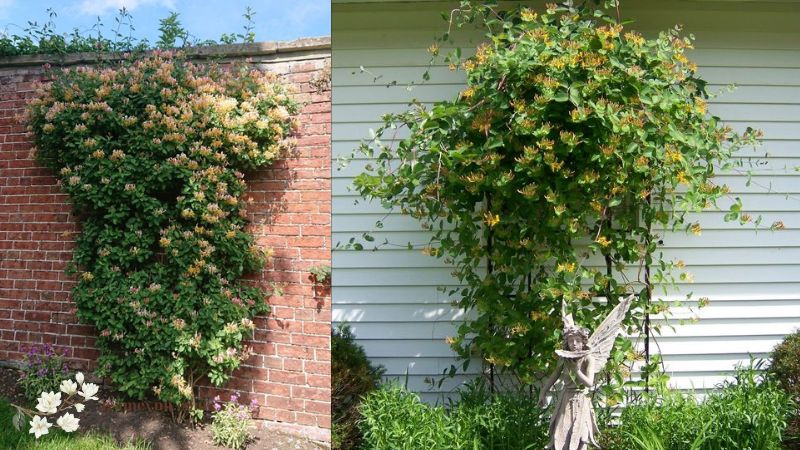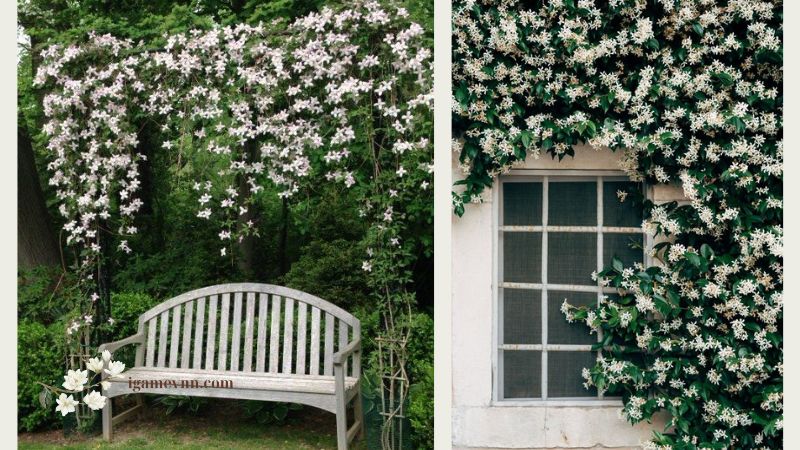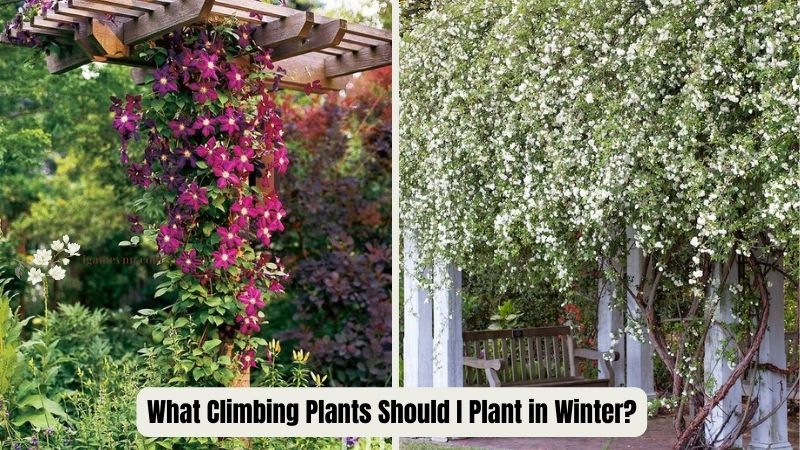When the colder months approach, many gardeners think it’s time to pause their planting activities. However, winter can be an excellent time to introduce hardy, robust climbing plants into your garden. These plants not only bring beauty and structure but also provide greenery and sometimes even blooms during the less colorful months. So, what climbing plants should I plant in winter? Here’s a comprehensive guide from Igamevnn to help you make the best choices for your garden.
What Climbing Plants Should I Plant in Winter?
1. Evergreen Clematis (Clematis armandii)
One of the top answers to the question, “What climbing plants should I plant in winter?” is the Evergreen Clematis. This vigorous climber is cherished for its lush, year-round foliage and its stunning, fragrant flowers that bloom in early spring. The Evergreen Clematis prefers a sunny spot with well-drained soil. It’s important to provide a support structure such as a trellis or fence for it to climb. This plant not only adds vertical interest but also ensures a burst of blossoms just as winter begins to fade.

2. Winter Jasmine (Jasminum nudiflorum)
Another excellent option when considering what climbing plants should I plant in winter is Winter Jasmine. Known for its bright yellow flowers that appear in late winter, this plant can bring a splash of color when few other plants are in bloom. Winter Jasmine thrives in full sun to partial shade and requires well-drained soil. It’s a hardy plant that can tolerate a range of conditions, making it ideal for winter planting. Train it against a wall or let it cascade over a structure to create a cheerful display.
3. Ivy (Hedera helix)
Ivy is a classic choice for winter planting. When pondering, “What climbing plants should I plant in winter?”, Ivy inevitably comes to mind. This evergreen climber is incredibly hardy and versatile. It can grow in various conditions, including full shade, making it perfect for those tricky spots in the garden. Ivy is great for covering walls, fences, or trellises, providing a lush green backdrop year-round. Be mindful, though, as Ivy can become invasive if not properly managed.
4. Honeysuckle (Lonicera spp.)
For those who wonder, “What climbing plants should I plant in winter?” Honeysuckle is a fantastic option. Some varieties of Honeysuckle are evergreen and can be planted during the winter months. These climbers are known for their sweetly scented flowers, which can add a delightful aroma to your garden. Honeysuckle prefers full sun to partial shade and well-drained soil. With proper care, it can quickly cover trellises or fences, creating a vibrant and fragrant display.

5. Climbing Hydrangea (Hydrangea anomala subsp. petiolaris)
When considering what climbing plants should I plant in winter, Climbing Hydrangea stands out. This plant is unique in that it thrives in shady spots, which can be particularly useful in a garden. Climbing Hydrangea produces beautiful white flowers in the summer and can be planted in winter. It prefers a cool, moist, and well-drained soil. This climber attaches itself to surfaces with aerial rootlets, making it ideal for covering walls or tree trunks.
6. Star Jasmine (Trachelospermum jasminoides)
Star Jasmine is another excellent choice when thinking about what climbing plants should I plant in winter. This evergreen climber is valued for its fragrant, star-shaped white flowers and glossy green leaves. It can be planted in winter in mild climates. Star Jasmine prefers a sunny to partially shaded location with well-drained soil. It’s perfect for training up trellises or along fences, adding both visual and olfactory delight to your garden.

Preparing for Winter Planting
Understanding the right time and conditions for planting is crucial. When asking, “What climbing plants should I plant in winter?” it’s essential to consider the specific needs of each plant. Most winter-hardy climbing plants require well-drained soil to prevent root rot. Mulching around the base of the plant can help protect the roots from extreme cold and retain moisture.
Providing Support
Climbing plants often need support structures to thrive. Whether it’s a trellis, pergola, fence, or wall, ensure you have the necessary supports in place before planting. This preparation will help your climbers establish themselves more quickly and grow in the desired direction. When pondering “What climbing plants should I plant in winter?”, remember that proper support is as important as choosing the right plant.
Watering and Maintenance
Even in winter, newly planted climbers need adequate water. However, it’s important not to overwater, as this can lead to root rot. Monitor the soil moisture and water when necessary. Regularly check your plants for signs of stress or disease. When considering “What climbing plants should I plant in winter?”, also think about the long-term maintenance each plant will require.
Benefits of Winter Planting
Planting in winter can give climbing plants a head start. The cooler temperatures reduce the risk of transplant shock, and winter rains can help establish the plants without the need for constant watering. By spring, when other plants are just starting to grow, your climbers will already be well-established and ready to flourish. This makes answering the question, “What climbing plants should I plant in winter?” even more rewarding.
Conclusion
So, what climbing plants should I plant in winter? With options like Evergreen Clematis, Winter Jasmine, Ivy, Honeysuckle, Climbing Hydrangea, and Star Jasmine, there are plenty of choices that can bring structure, greenery, and even flowers to your garden during the colder months. Winter planting can be incredibly rewarding, providing a head start for your garden’s spring growth. Ensure you choose the right plants for your climate and conditions, and provide the necessary support and care to see them thrive.
Winter doesn’t have to mean a dormant garden. By selecting the right climbing plants and planting them during the colder months, you can enjoy a vibrant, living garden year-round. Embrace the opportunity to enhance your garden’s vertical spaces and bring new life to your outdoor areas, even in winter.

